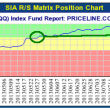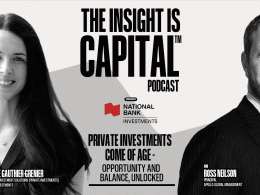In a recent piece by Doug Kass at TheStreet.com he highlights some reasons to be cautious about the equity markets. I don’t like the concept that “everyone is in the pool”, as he mentions, because it implies something like the “cash on the sidelines” fallacy, but I do think his piece is well thought out and worth considering. I’ve attached his 7 reasons to be cautious:
- “The median price-to-revenue ratio of the S&P 500 is now at an historic high, eclipsing even the 2000 level.
- The Shiller P/E is above 25, exceeding all observations prior to the late-1990s’ bubble except for three weeks in 1929.
- Market cap-to-GDP is already past its 2007 peak and is approaching the 2000 extreme. (This ratio is stretched at over two standard deviations above its long-term average.
- The implied profit margin in the Shiller P/E (denominator of Shiller P/E divided by S&P 500 revenue) is 18% above the historical norm. On normal profit margins, the Shiller P/E would already be 30.
- If one examines the data, these raw valuation measures typically have a fraction of the relationship to subsequent S&P 500 total returns as measures that adjust for the cyclicality of profit margins (or are unaffected by those variations), such as Shiller P/E, price-to-revenue, market cap-to-GDP and even price-to-cyclically-adjusted-forward-operating-earnings.
- Because the deficit of one sector must emerge as the surplus of another, one can show that corporate profits (as a share of GDP) move inversely to the sum of government and private savings, particularly with a four- to six-quarter lag. The record profit margins of recent years are the mirror-image of record deficits in combined government and household savings, which began to normalize about a few quarters ago. The impact on profit margins is almost entirely ahead of us.
- The impact of 10-year Treasury yields (duration 8.8 years) on an equity market with a 50-year duration (duration in equities mathematically works out to be close to the price-to-dividend ratio) is far smaller than one would assume. Ten-year bonds are too short to impact the discount rate applied to the long tail of cash flows that equities represent. In fact, prior to 1970, and since the late-1990s, bond yields and stock yields have had a negative correlation. The positive correlation between bond yields and equity yields is entirely a reflection of the strong inflation-disinflation cycle from 1970 to about 1998.”
Read the whole thing here.
Copyright © Pragmatic Capitalism












